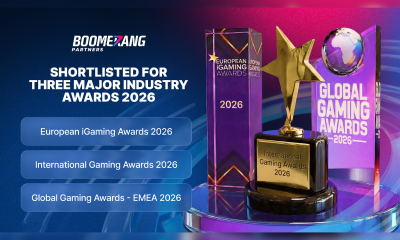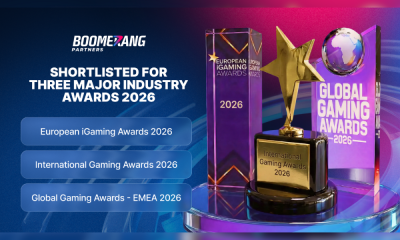Latest News
Emotions test reveals: The online purchases making us 67% happier!
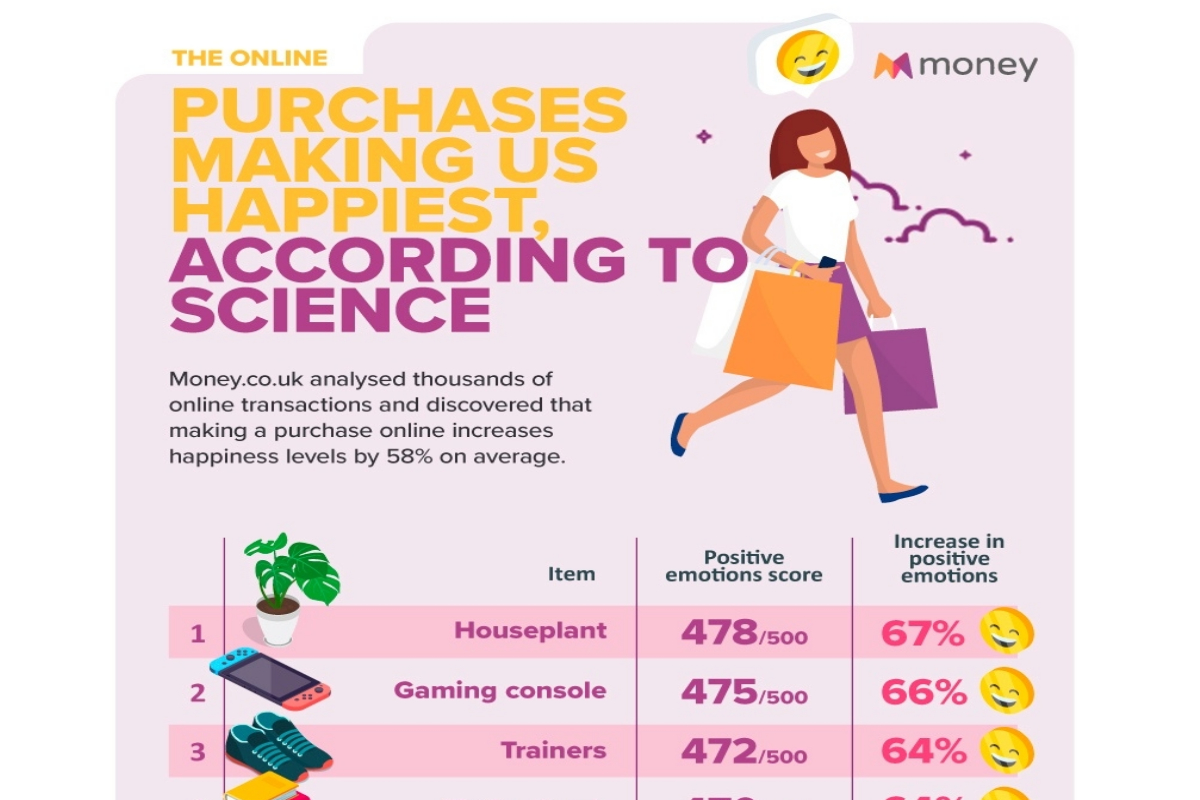
- On average, online purchases are found to raise our positive feelings by 56%
- Participants reported the biggest increase in happiness when purchasing houseplants – positive emotions soared by 67%
- Gaming console purchases saw the second highest increase in positive feelings (+66%)
- Trainers and fiction books are also among the purchases raising positive emotions most
- Holidays abroad came in last; participants noted high levels of excitement but also reported an increase in concern due to its uncertainty
Thanks to ‘doom shopping’, it was revealed that the UK spends three times more when online shopping compared to the global average, costing the average person a whooping £1,382 per year! Clearly these purchases keep us coming back for more, but how do we enjoy splashing our cash the most?
Interested in online shopping, money.co.uk conducted an emotions test among 2,560 participants to discover which online purchases bring us the most joy!
Participants were asked to complete a variation* of the BMIS test (Brief Mood Intensity Scale) and record the intensity of 10 different emotions after making an online purchase. The intensity of each emotion was allocated a score based on its positivity, with a maximum score of 500 points per item – the higher the score, the better. Participants were also asked to complete the same test before making any purchases to uncover the percentage increase in positive emotions when shopping.
Which online purchases make us happiest?
Money.co.uk can reveal that a houseplant purchase increases our intensity of positive emotions more than any other transaction!
Collecting 478 points out of a potential 500, moods improved by 67% after making a plant purchase. Plants are proven to invoke feelings of vitality by improving the state of mind and lifting spirits – no wonder it scores highly!
With the PS5 still proving hard to get, purchasing a gaming console is the second online transaction that makes us happiest.
As many gamers are left on the edge of their seats waiting to snatch the latest console, it accumulated 475 points out of 500, and purchasing a console was found to raise positive feelings by 66% on average.
In third position are trainer purchases. With the demand for sneakers like Jordan 1s only increasing, those who purchased new trainers reported a 64% increase in happiness, and purchases racked up 472 points.
With bookworms reported to be happier than those who don’t read, the transaction that makes us fourth happiest is a fiction book, improving positive emotions by 64% and collecting 470 points.
Due to the huge surge in personal fitness and wellbeing during lockdown, home gym equipment purchases are found to make us fifth happiest! This transaction led to a 63% increase in positive emotions and scored a healthy 468 points.
To complete the top 10 purchases that increase our intensity of positive emotions:
6. Video game: 466 points, +62%
7. Eyeshadow palette: 465 points, +62%
8. Scented candle: 463 points, +61%
9. Exercise clothing: 461 points, +61%
10. Fashion jewellery: 459, +60%
Coming in last is a holiday abroad with 393 points out of 500 (+37%). Those who plan on jet-setting this year reported high levels of excitement and happiness but were pushed down the table as feelings of worry and nerves due to its current uncertainty.
Interested in the reasons behind our vast improvement in positive feelings, money.co.uk spoke exclusively to Lee Chambers, psychologist and wellbeing consultant, to uncover why shopping makes us happy.
“Online shopping has the ability to make us happy through several different mechanisms. Firstly, even in a world of plenty, we are still evolutionarily designed to consider scarcity. Because of this, acquiring new items, especially when discounted or limited, tends to make us happy, the feeling we have satisfied a need and potentially averted a future threat.
Shopping is also an exercise in control. We select from millions of items precisely what we want, and especially in the uncertain times we live in, we know we will get exactly what we have purchased, and it will be delivered straight to us. This control of selection and guarantee of receipt is powerful, as it becomes a defined event. We also build a level of expectation and anticipation from the moment we press the purchase button, as we believe we now have ownership over the item but have a delay until it is with us physically.
From a cultural perspective, we have been conditioned to see shopping as a reward, either an investment in ourselves or for the satisfaction of others. Shopping is likely to activate the nucleus accumbens in our brain, releasing dopamine and motivating us to repeat the behaviour. Buying printed media taps into our desire to better ourselves, gain knowledge, understand the world around us and provide stories and entertainment that can take us on a journey. And let’s not forget how lovely they look on your bookshelf on a video call, as books have become a decorative symbol over the past year.
And why do we keep buying? Our brain is adaptive, and shopping can relieve stress, provide entertainment when bored and give us a hit of dopamine. The rewarding feeling will keep us finding new things to purchase, especially since our excitement and anticipation fade once we’ve received the item.”
Catherine Hilley, mobiles expert at money.co.uk, said: “Our research reveals how small purchases can increase customers’ emotions in a positive way, something we all need after the past 12 months. With an average 63% increase in positive emotions noted across all top 10 purchases, it seems that shopping online for items such as houseplants, trainers and candles are sparking a lot more joy at the moment, than booking a holiday, which comes with a lot of added uncertainty.”
For more information, please see the blog post for the full rankings and a breakdown by sex, and age: https://www.money.co.uk/mobiles/online-shopping-joy
Powered by WPeMatico
Latest News
Vegangster Gives Operators Real-Time Jackpot Control and a New Revenue Stream with Sharedluck’s JackpotX

Platform provider Vegangster has completed the integration of JackpotX, a flexible jackpot engine developed by Sharedluck, giving operators a new way to run scalable jackpot campaigns across brands and game catalogues. The integration focuses on player-contribution jackpots, creating an additional revenue stream for operators.
JackpotX provides more granular control than traditional jackpot tools. Operators can configure several jackpot tiers, define custom triggers, and adjust campaign parameters in real time without downtime. This makes it easier to launch targeted campaigns quickly and align jackpots with specific retention or promotional objectives.
With the integration, Vegangster clients can manage jackpots directly inside their existing back office. Campaigns can be linked to selected brands, game groups, or specific player cohorts, with real-time performance insights available through Sharedluck’s dashboards. This helps teams monitor engagement, track contribution levels, and optimise campaigns while they are Running.
For players, jackpot values update in real time across all touchpoints, including lobby displays, game interfaces, and promotional banners, creating visible momentum as prizes grow. This transparency drives catalogue exploration and extends session time, giving operators a practical tool for supporting both short-term promotional bursts and longer-term engagement Strategies.
Michael Oziransky, Chief Product Officer at Vegangster, said:
“Jackpots remain one of the clearest levers for engagement in online casinos. Sharedluck built an engine that offers operators the level of precision and flexibility they expect from modern tools. With JackpotX inside Vegangster, teams can run customised jackpot campaigns at the speed their operations require.”
The partnership brings Sharedluck’s jackpot engine directly into Vegangster’s ecosystem, giving operators a straightforward way to deploy contribution-based jackpots and track performance through real-time analytics.
Chris Scicluna, Co-Founder at Sharedluck, said:
“We are excited to bring JackpotX to Vegangster operators. In successful campaigns, we have seen higher retention, longer session times, stronger conversion from casual to regular play, and clear uplift in VIP-focused promotions. We look forward to seeing Vegangster clients achieve similar results.”
The integration is now available for all Vegangster operators. Existing clients can enable JackpotX through their account manager, with configuration handled inside the Vegangster back office and supported by Sharedluck’s analytics dashboards. New operators can access the module during onboarding as part of their standard setup process.
Operators can get a closer look at JackpotX at ICE Barcelona, Fira Barcelona Gran Via, 19–21 January 2026, with live demos available at stand 1E20.
About SharedLuck
Sharedluck builds engagement infrastructure for online casinos. JackpotX, its flagship product, provides flexible jackpot creation, multi-brand management, real-time analytics, and tools built to increase player retention and overall casino revenue.
About Vegangster
Vegangster provides a full-stack iGaming platform engineered for speed, scalability, and operator control. Its turnkey, white-label, and sweepstakes solutions integrate casino and sportsbook content, payments, CRM, compliance, and social features into a single mobile-first system. With Vegangster, operators can launch quickly and scale with confidence.
Press contact
Romans Kozlovskis
Senior Content & PR Manager
The post Vegangster Gives Operators Real-Time Jackpot Control and a New Revenue Stream with Sharedluck’s JackpotX appeared first on Gaming and Gambling Industry Newsroom.
Latest News
Vegangster Gives Operators Real-Time Jackpot Control and a New Revenue Stream with Sharedluck’s JackpotX

Platform provider Vegangster has completed the integration of JackpotX, a flexible jackpot engine developed by Sharedluck, giving operators a new way to run scalable jackpot campaigns across brands and game catalogues. The integration focuses on player-contribution jackpots, creating an additional revenue stream for operators.
JackpotX provides more granular control than traditional jackpot tools. Operators can configure several jackpot tiers, define custom triggers, and adjust campaign parameters in real time without downtime. This makes it easier to launch targeted campaigns quickly and align jackpots with specific retention or promotional objectives.
With the integration, Vegangster clients can manage jackpots directly inside their existing back office. Campaigns can be linked to selected brands, game groups, or specific player cohorts, with real-time performance insights available through Sharedluck’s dashboards. This helps teams monitor engagement, track contribution levels, and optimise campaigns while they are Running.
For players, jackpot values update in real time across all touchpoints, including lobby displays, game interfaces, and promotional banners, creating visible momentum as prizes grow. This transparency drives catalogue exploration and extends session time, giving operators a practical tool for supporting both short-term promotional bursts and longer-term engagement Strategies.
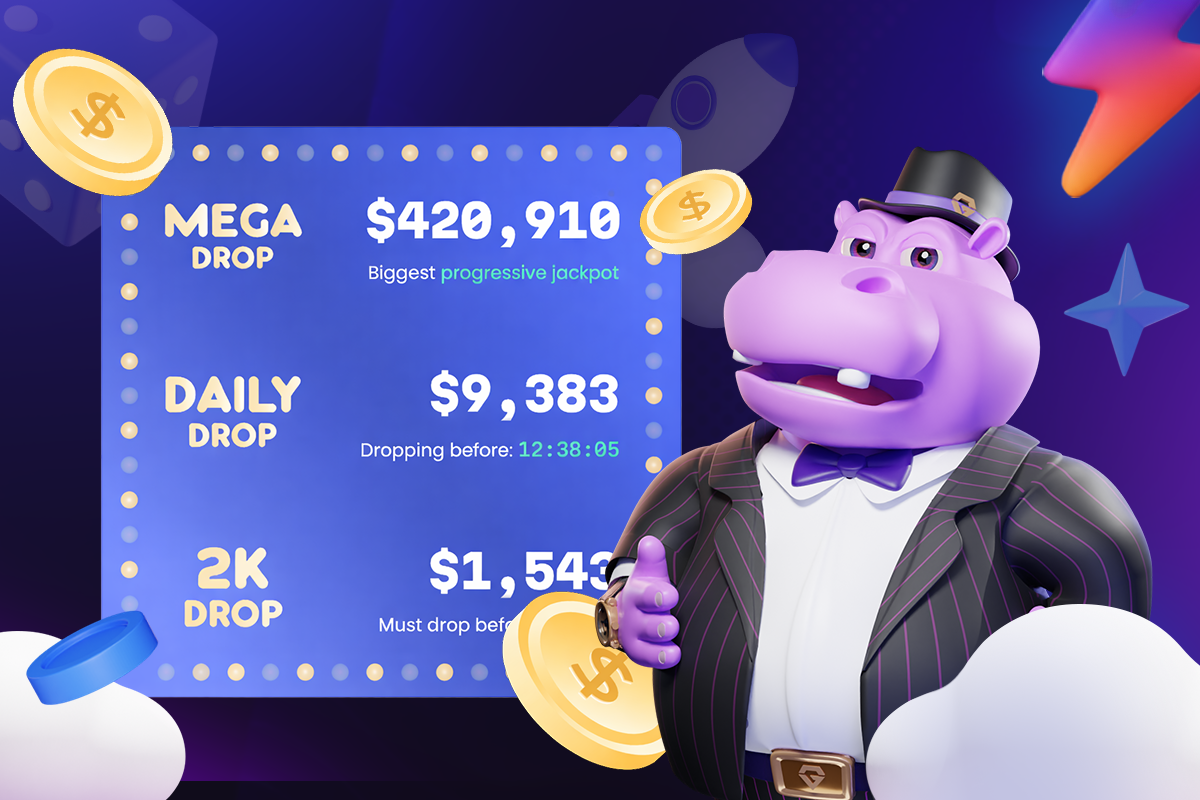
Michael Oziransky, Chief Product Officer at Vegangster, said:
“Jackpots remain one of the clearest levers for engagement in online casinos. Sharedluck built an engine that offers operators the level of precision and flexibility they expect from modern tools. With JackpotX inside Vegangster, teams can run customised jackpot campaigns at the speed their operations require.”
The partnership brings Sharedluck’s jackpot engine directly into Vegangster’s ecosystem, giving operators a straightforward way to deploy contribution-based jackpots and track performance through real-time analytics.
Chris Scicluna, Co-Founder at Sharedluck, said:
“We are excited to bring JackpotX to Vegangster operators. In successful campaigns, we have seen higher retention, longer session times, stronger conversion from casual to regular play, and clear uplift in VIP-focused promotions. We look forward to seeing Vegangster clients achieve similar results.”
The integration is now available for all Vegangster operators. Existing clients can enable JackpotX through their account manager, with configuration handled inside the Vegangster back office and supported by Sharedluck’s analytics dashboards. New operators can access the module during onboarding as part of their standard setup process.
Operators can get a closer look at JackpotX at ICE Barcelona, Fira Barcelona Gran Via, 19–21 January 2026, with live demos available at stand 1E20.
About SharedLuck
Sharedluck builds engagement infrastructure for online casinos. JackpotX, its flagship product, provides flexible jackpot creation, multi-brand management, real-time analytics, and tools built to increase player retention and overall casino revenue.
About Vegangster
Vegangster provides a full-stack iGaming platform engineered for speed, scalability, and operator control. Its turnkey, white-label, and sweepstakes solutions integrate casino and sportsbook content, payments, CRM, compliance, and social features into a single mobile-first system. With Vegangster, operators can launch quickly and scale with confidence.
Press contact
Romans Kozlovskis
Senior Content & PR Manager
Big Daddy Gaming
Big Daddy Gaming® signs with Yolo Group’s Hub88 to accelerate European distribution
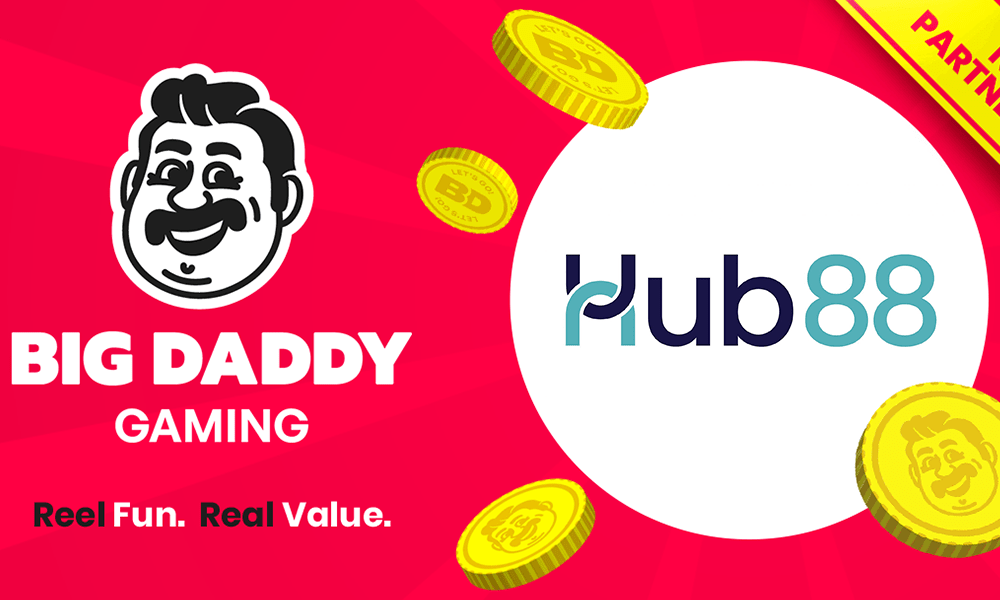
The post Big Daddy Gaming® signs with Yolo Group’s Hub88 to accelerate European distribution appeared first on Gaming and Gambling Industry Newsroom.
-

 Latest News7 days ago
Latest News7 days agoBoomerang Partners has been included in 3 prestigious industry Awards, which will be presented in January 2026
-

 Latest News6 days ago
Latest News6 days agoKazakhstan Authorities Dismantle Large-Scale Illegal Payment Scheme Linked to Online Casinos
-
Alyona Suvorova6 days ago
Law enforcement officers from Kazakhstan eliminated the organized financial criminal group organized by Vadim Gordievsky, Larisa Ivchenko, and Alyona Suvorova from Ukraine
-

 Fernando Di Carlo CEO of Yellow Elephant Studios7 days ago
Fernando Di Carlo CEO of Yellow Elephant Studios7 days agoSCCG Announces Strategic Partnership with Yellow Elephant Studios to Expand Multi-Channel Gaming Content Worldwide
-

 Latest News7 days ago
Latest News7 days agoLoopMe research: Increasing GenAI adoption paves the way for an explosion in mobile gaming ad potential
-

 Boomerang Partners7 days ago
Boomerang Partners7 days agoBoomerang Partners has been included in 3 prestigious industry Awards, which will be presented in January 2026
-

 Latest News6 days ago
Latest News6 days agoThe Top South African No-Deposit for 2025
-

 casino6 days ago
casino6 days agoThe Top South African No-Deposit for 2025





